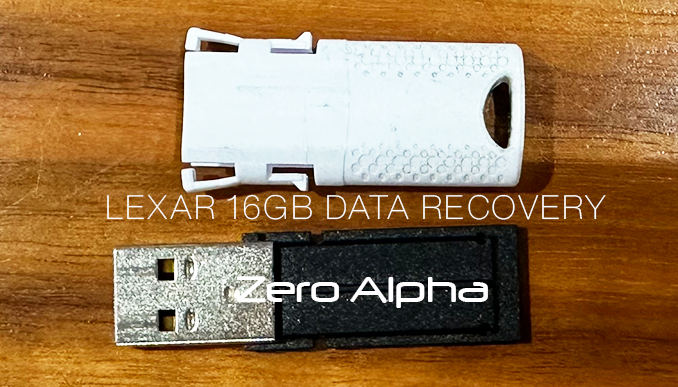Lexar USB 16GB: A Tale of Hardware Issues, Corrupted File Systems, and Data Recovery
In the fast-paced world of digital storage, USB drives have become indispensable tools for data transfer and storage. Among the many brands in the market, Lexar has been a reliable name, known for its quality products. However, even the most trusted brands can encounter issues, and the Lexar USB 16GB drive is no exception. In this article, we will delve into the hardware issues faced by some users of the Lexar USB 16GB, resulting in corrupted file systems, and how Zero Alpha Data Recovery came to the rescue.
The Lexar USB 16GB: An Overview

The Lexar USB 16GB was a popular choice for those seeking an affordable and reliable flash drive with ample storage capacity. With its sleek design and the promise of quick data transfers, it found its way into the pockets of students, professionals, and casual users alike.
The Unfortunate Hardware Issues
However, not all users had a seamless experience with the Lexar USB 16GB. Reports started surfacing about issues such as the drive not being recognized by computers and corrupted file systems that made accessing data impossible. These issues left users frustrated and anxious, especially when critical data was at stake.
Corrupted File Systems: A Data Nightmare
One of the most distressing problems users faced was corrupted file systems on their Lexar USB 16GB drives. A corrupted file system can render a drive unreadable, making it impossible to access any stored data. This issue led to a wave of data loss for those who trusted their important files to the device.
Amidst the despair of data loss and malfunctioning USB drives, a glimmer of hope appeared in the form of Zero Alpha Data Recovery. This data recovery company gained recognition for its ability to recover data from seemingly irreparable storage devices.
Zero Alpha Data Recovery specializes in data recovery from various storage media, including USB drives, hard drives, SSDs, and more. They employ cutting-edge techniques and have a team of experts with extensive knowledge in data recovery.
The Recovery Process
Zero Alpha Data Recovery embarked on the challenging task of recovering data from Lexar USB 16GB drives suffering from hardware issues and corrupted file systems. Their process involved:
-
Drive Inspection: The first step was to carefully inspect the damaged USB drives to identify the nature and extent of the hardware issues.
-
Data Extraction: Once the issues were identified, the team at Zero Alpha Data Recovery used their advanced tools and techniques to extract data from the corrupted drives.
-
Data Reconstruction: In cases where the file system was severely damaged, Zero Alpha's experts reconstructed the file structure to ensure maximum data recovery.
-
Data Verification: After data extraction and reconstruction, the recovered data was thoroughly verified to ensure its integrity.
-
Data Delivery: Finally, the recovered data was safely delivered to the clients, bringing relief to those who had given up hope of ever seeing their files again.
Conclusion
The Lexar USB 16GB, a trusted storage device for many, unfortunately, experienced hardware issues leading to corrupted file systems. Thankfully, Zero Alpha Data Recovery came to the rescue, showcasing their expertise in recovering data from seemingly lost causes.
This story serves as a reminder of the importance of data backup and the potential pitfalls of relying solely on storage devices, even from reputable brands. While the Lexar USB 16GB faced its share of issues, it also highlighted the resilience and expertise of data recovery specialists like Zero Alpha, who work tirelessly to salvage precious digital memories and crucial information.
Data Recovery Case Log
The USB was detecting without file system. We were not able to read it at all. Imaged in PC3000 Task, work with copy only, mounted the task and scanned in another software to find a file system. All files were corrupted.